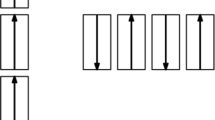Abstract
The evolution of technology into deep sub-micron domains leads to increasingly complex timing closure problems to design multiprocessor systems. One natural alternative is to resort to the globally asynchronous, locally synchronous paradigm. This work proposes a generic architecture for very low power- and area-overhead local clock generators (LCGs) to drive processors, network-on-chip routers and other intellectual properties (IPs). As one original contribution, the article details the design of a digitally controlled oscillator (DCO) which is the core of the LCG architecture. This DCO was designed using a CMOS 65 nm technology. It produces at least 16 distinct frequencies from 117 MHz to 1 GHz and supports clock gating and glitch-free frequency changes. The DCO design is robust to process, voltage and temperature variations, takes 850.6 µm2 and dissipates up to 197 µW. The article also proposes an LCG controller to improve frequency accuracy for IPs which require more accurate timing. Designed in the same technology, the controller takes 2250 µm2 and consumes 130 µW in typical conditions, or 160 µW, under worst-case conditions.










Similar content being viewed by others
References
Chapiro, D (1984). Globally-asynchronous locally-asynchronous systems. PhD Thesis, Stanford University.
Gürkaynak, F. K., Oetiker, S., Kaeslin, H., Felber, N., & Fichtner, W. (2006). GALS at ETH Zurich: Success or failure. In International symposium on asynchronous circuits and systems (ASYNC) (pp. 150–159).
Beigné, E., Clermidy, F., Lattard, D., Miro-Panades, I., Thonnart, Y., & Vivet, P. (2015). Fine-grain DVFS and AVFS techniques for complex SoC design: An overview of architectural solutions through technology nodes. In IEEE international symposium on circuits and systems (ISCAS), May 2015 (pp. 1550–1553).
Cheshmi, K., Mohammadi, S., Versick, D., Tavangarian, D., & Trajkovic, J. (2015). A clustered GALS NoC architecture with communication-aware mapping. In 23rd Euromicro international conference on parallel, distributed and network-based processing (PDP), March 2015 (pp. 425–429).
ITRS. (2011). International technology roadmap for semiconductors. Technical report, ITRS. Retrieved October, 2014.
Sobczyk, A. L., Luczyk, A. W., & Pleskacz, W. A. (2008). Controllable local clock signal generator for deep submicron GALS architectures. In Design and diagnostics of electronic circuits and systems DDECS, 2008 (pp. 14–17).
Yadav, M. K., Casu, M. R., & Zamboni, M. (2012). DVFS based on voltage dithering and clock scheduling for GALS systems. In International symposium on asynchronous circuits and systems (ASYNC), 2012 (pp. 118–125).
Rosa, T., Larrea, V., Calazans, N., & Moraes, F. (2012). Power consumption reduction in MPSoCs through DFS. In Symposium on integrated circuits and systems design (SBCCI), 2012 (pp. 1–6).
Albea, C., Puschini, D., Vivet, P., Panades, I. M., Beigné, E., & Lesecq, S. (2011). Architecture and robust control of a digital frequency-locked loop for fine-grain dynamic voltage and frequency scaling in globally asynchronous locally synchronous structures. Journal of Low Power Electronics (JOLPE), 7(3), 328–340.
Fish, F. (1973). R–2R resistive ladder, digital-to-analog converter. US Patent 3728719 A.
August, N., Lee, H. J., Vandepas, M., & Parker, R. (2012). A TDC-less ADPLL with 200-to-3200 MHz range and 3 mW power dissipation for mobile SoC clocking in 22 nm CMOS. In IEEE international solid-state circuits conference (ISSCC), February 2012 (pp. 246–248).
Höppner, S., Eisenreich, H., Henker, S., Walter, D., Ellguth, G., & Schüffny, R. (2013). A compact clock generator for heterogeneous GALS MPSoCs in 65-nm CMOS technology. IEEE Transactions on VLSI Systems, 21(3), 566–570.
Höppner, S., Haenzsche, S., Ellguth, G., Walter, D., Eisenreich, H., & Schüffny, R. (2013). A fast-locking ADPLL with instantaneous restart capability in 28 nm CMOS technology. Transactions on Circuits and Systems II: Express Briefs (TCASII), 60(11), 741–745.
Ogras, U. Y., Marculescu, R., Marculescu, D., & Jung, E. G. (2009). Design and management of voltage–frequency island partitioned networks-on-chip. IEEE Transactions on VLSI Systems, 17(3), 330–341.
Carara, E., Oliveira, R., Calazans, N., & Moraes, F. (2009). HeMPS—A framework for NoC-based MPSoC generation. In IEEE international symposium on circuits and systems (ISCAS), 2009 (pp. 1345–1348).
Ginosar, R. (2011). Metastability and synchronizers: A tutorial. IEEE Design and Test of Computers, 28(5), 23–35.
Baker, R. J. (2011). CMOS: Circuit design, layout, and simulation. Hoboken, NJ: Wiley.
Klapf, C., Missoni, A., Pribyl, W., Holweg, G., & Hofer, G. (2008). Analyses and design of low-power clock generators for RFID TAGs. In PhD research in micro and electronics (PRIME) (pp. 181–184).
Razavi, B. (2001). Design of analog CMOS integrated circuits. Beijing: Tsinghua University Press.
Bhasker, J., & Chadha, R. (2009). Static timing analysis for nanometer designs: A practical approach. New York: Springer.
Acknowledgments
Authors acknowledge the support of CNPq under Grants 142263/2012-5, 401839/2013-3, 200147/2014-5, 202519/2014-7 and 310864/2011-9 and the support of CAPES.
Author information
Authors and Affiliations
Corresponding author
Rights and permissions
About this article
Cite this article
Heck, G., Heck, L.S., Moreira, M.T. et al. A new local clock generator for globally asynchronous locally synchronous MPSoCs. Analog Integr Circ Sig Process 89, 631–640 (2016). https://doi.org/10.1007/s10470-016-0827-9
Received:
Revised:
Accepted:
Published:
Issue Date:
DOI: https://doi.org/10.1007/s10470-016-0827-9




